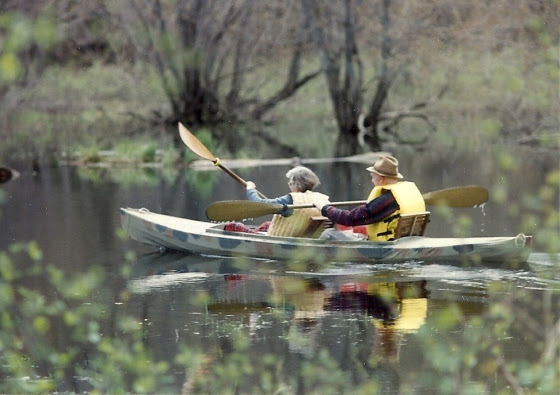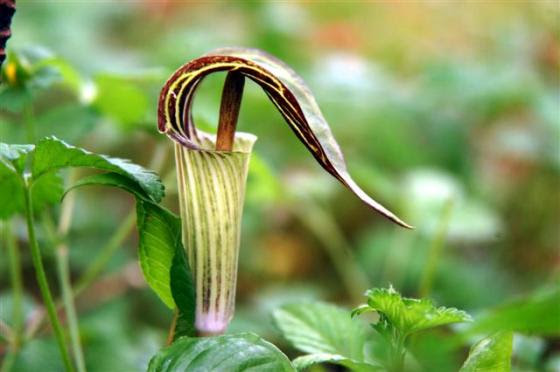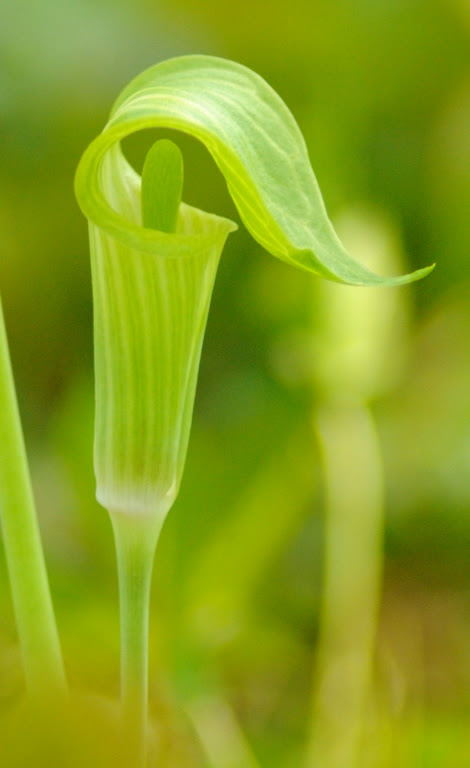Spring Flows Seamlessly Into Summer
Article and photos by Joe Mish

The late spring rain continued without interruption into summer, though the shower only lasted two minutes.
Somewhere within those two minutes, the earth’s position in its yearlong orbit around the sun, triggered changes in daylength. The change from spring to summer appears seamless though the end of one season and the beginning of the next is measured to the nanosecond. Life on earth has evolved to respond to the predictable ebb and flow of daylength. Light sensitive receptors direct chemical changes within the body affecting behavior and development as seen most obviously in trees and plants.
The weeks before and after the arrival of summer hold the potential for producing magical moments of timeless beauty and peaceful retreat when nature takes a deep warm, relaxing breath and exhales.
A whisper of mist and gentle rain partner to dim the light, hide the sun, and erase all perception of time. The chill of spring and warmth of summer agree to mediation, making either imperceptible to detect. The wind’s contribution is so minimal, the moisture and misty curtain of fog offer more than enough resistance to silence all sound and movement. The only detectable motion is that of an isolated leaf rising from genuflection, after the weight of accumulated moisture forced it to bow to gravity.
On just such a day, when the world was huddled and dry and nature between breaths, I stowed my carbon fiber paddles, lightweight fishing rod into my Kevlar canoe, shouldered my pack and walked toward the river. The trail through the succession growth, transitioning from tilled crop field to woodlands, is hardly recognizable to a stranger despite years of use. Intentionally so, following a philosophy of, “leave no trace” my path roughly sought the shortest route, ever changing so slightly as shade and sun tolerant plants competed for dominance.
Passing first through a canopy of red oak branches, spawn of the giant that stood tall for a century, the thin bare oak branches performed a scratchy tune on the boat’s hull which magnified the uncomfortable sound to disturb the silence. Once in the open, tufts of amber grass, darkened by the rain to a rusty orange color, took advantage of a once mowed path to dominate as if marking the center of a road. Rose hips, escaped from the garden, and multiflora rose, spread their tentacles across the path, redirecting travel to avoid the curved thorns and torn clothes.
As the field grew, the occasional black walnut would tower above the spreading rose bushes, small red cedars, dried stalks of swamp milkweed and dogbane, to act as a lighthouse beacon marking the faint trail.
Breaking free onto the open flood plain, the river came into view. Isolated sections of its banks retained a few sentinel trees interspersed by a variety of brush and wild celery acted as a tattered tapestry revealing patches of flowing water.
The variety of trees and woody plants shared the same pale green color to suggest all were kindred spirits. In the distance looking down river, the fallow crop field allowed an unobstructed view beyond the bend in the river’s course, a quarter mile away. The green belt was notched at the bend by a tall American sycamore tree whose characteristic white trunk stood in sharp contrast as a neon landmark. Approaching the river at a breach in the eroded riverbank, I waded in and set the canoe on the still water below an island, which was once part of the pasture. The remains of tree stumps underwater, mid river, validated that the land was subject to the meandering river.
I set my pack behind the center seat and tied it to the slotted gunnel on a length of paracord. One bent shaft paddle was unstowed and leaned across the front thwart. Once aboard, I sat for a long moment to feel the gentle current, energized by gravity, magically carrying me downstream into summer. The sight and sound of the water’s surface, dappled by sparse raindrops surging from the falling mist, was meditative. I leaned forward, paddle across my lap, head pulled deep into my hood, I peered out of an imaginary cave, dry and comfortable, satisfied to move at the pace of the slow current on a journey from spring into summer.
Author Joe Mish has been running wild in New Jersey since childhood when he found ways to escape his mother’s watchful eyes. He continues to trek the swamps, rivers and thickets seeking to share, with the residents and visitors, all of the state’s natural beauty hidden within full view. To read more of his writing and view more of his gorgeous photographs visit Winter Bear Rising, his wordpress blog. Joe’s series “Nature on the Raritan, Hidden in Plain View” runs monthly as part of the LRWP “Voices of the Watershed” series. Writing and photos used with permission from the author. Contact jjmish57@msn.com.


